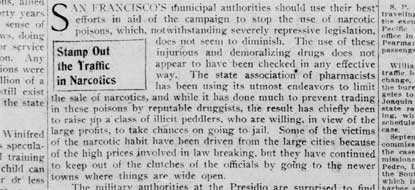I thought it would be interesting to get the views of readers on different models of marijuana legalization (note: this is marijuana legalization only — we’ll explore other drugs in later polls).
- DrugWarRant.com, the longest running single-issue blog devoted to drug policy
Join us on Pete's couch.
 Send comments, tips,
Send comments, tips,
and suggestions to: Recent Comments
Servetus on Marijuana and medieval Muslim drug wars: “State drug laws involving drug testing discourage prenatal medical care: 29-Oct-2025 — States that explicitly criminalize prenatal drug use may…” Nov 2, 11:22
Servetus on Marijuana and medieval Muslim drug wars: “NIDA grant gives $4 million to university and school of medicine studies to examine the economics of overdose prevention strategies…” Nov 1, 19:10
Servetus on Marijuana and medieval Muslim drug wars: “How psychedelic drugs target the brain’s claustrum: 27-Oct-2025 — In a new eNeuro paper, researchers led by Pavel Ortinski, from…” Oct 30, 20:44
Lanora Coon on Petition for Correction under the ONDCP Information Quality Guidelines: “Hi, We have curated a list of the best plumbing tools available in the market. You can check it out…” Oct 28, 23:01
Servetus on Marijuana and medieval Muslim drug wars: “Psilocybin treats patients with treatment-resistant obsessive-compulsive disorder (OCD) and body dysmorphic disorder: 28-Oct-2025 — The research team conducted systematic searches…” Oct 28, 18:01
Servetus on Marijuana and medieval Muslim drug wars: “Gene mutation leads to an increased risk of alcoholism: 27-Oct-2025 — Researchers from the Yong Loo Lin School of Medicine…” Oct 27, 19:52
TimothyLam on Marijuana and medieval Muslim drug wars: “I’ve been exploring https://terpenewarehouse.com/collections/appetite-suppressant-terpenes recently, and I’m deep down enjoying the experience. The scents are with, typical, and pleasant. They…” Oct 25, 07:40
ManuelThams on Marijuana and medieval Muslim drug wars: “I’ve been using https://www.nothingbuthemp.net/collections/mushroom-gummies daily seeing that all about a month nowadays, and I’m indeed impressed during the uncontested effects.…” Oct 23, 09:41
Pages
- About
- Articles
- A Day at the Museum
- A story for Thanksgiving (Isidro and Teresa Aviles)
- Andrea Barthwell, caught red-handed
- Andrea Barthwell, Snake Oil Salesman
- Bong Hits 4 Jesus – Supreme Court Case
- DEA Bad Girl Michele Leonhart
- Deep Thoughts About the Drug War
- Drug War Victims
- Drug War Videos
- Drug WarRant Joins SOPA, PIPA Protest
- Hammer Down, Pop Up
- If I were Contrarian-King of the United States
- Increase in Burger Abuse Seen
- Irvin Rosenfeld and the Compassionate IND — Medical Marijuana Proof and Government Lies
- Karen Tandy and the DEA (Can Congress Get a Clue?)
- Len Bias – the death that ushered in two decades of destruction
- Mother and Son
- Patriot Act, Victory Act, Despot Act
- Petition for Correction under the ONDCP Information Quality Guidelines
- Raich v. Ashcroft
- Rand and American Enterprise Institute Studies – Indictments of Federal Drug Policy
- the Drug Czar is Required by Law to Lie
- Treatment Statistics
- Who’s Who in Drug Prohibition
- Why is Marijuana Illegal?
November 2025 M T W T F S S 1 2 3 4 5 6 7 8 9 10 11 12 13 14 15 16 17 18 19 20 21 22 23 24 25 26 27 28 29 30 Archives
Authors
November 2025 M T W T F S S 1 2 3 4 5 6 7 8 9 10 11 12 13 14 15 16 17 18 19 20 21 22 23 24 25 26 27 28 29 30

 If current trends toward medical decriminalization continue, if the Webb Commission in the Senate concludes that some changes in U.S. drug laws are necessary and desirable, and if the Obama administration pursues a de facto harm reduction approach without explicitly stating it, there may be a way for Mexico to extricate itself from its current, tragic predicament. Otherwise, though, there does not seem to be any accessible, affordable, and acceptable exit strategy from the current war. And Mexico will continue to pay an exorbitant cost for having plunged, with U.S. support and encouragement, into a war with no ostensible victory in sight. […]
If current trends toward medical decriminalization continue, if the Webb Commission in the Senate concludes that some changes in U.S. drug laws are necessary and desirable, and if the Obama administration pursues a de facto harm reduction approach without explicitly stating it, there may be a way for Mexico to extricate itself from its current, tragic predicament. Otherwise, though, there does not seem to be any accessible, affordable, and acceptable exit strategy from the current war. And Mexico will continue to pay an exorbitant cost for having plunged, with U.S. support and encouragement, into a war with no ostensible victory in sight. […]
